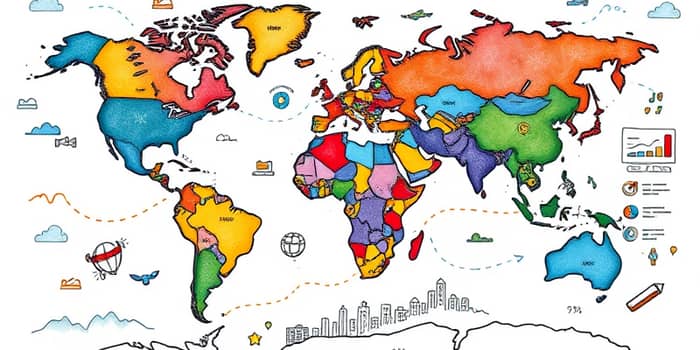
Geographic market analysis empowers businesses to unlock deep regional insights that drive growth. By dividing markets into specific locations, companies can tailor offerings to local demands and cultural norms. This approach not only enhances relevance but also boosts efficiency. With today’s competitive landscape, understanding how geography shapes consumer behavior is essential to improves product-market fit and long-term success.
At its core, geographic market analysis means segmenting a market based on location attributes such as country, state, city, climate, or population density. Each segment exhibits distinct buying patterns and preferences influenced by local traditions, weather, and infrastructure.
This method acknowledges that location influences cultural norms, purchasing habits, product demand, and communication styles. Armed with these insights, businesses can develop tailored marketing and product strategies that resonate with each region’s unique characteristics.
Focusing marketing efforts on regions with the highest potential optimizes resource allocation and maximizes return on investment. By zeroing in on areas where demand is strongest or growing rapidly, organizations can avoid wasted spend and streamline operations.
Moreover, customizing messages to reflect local language nuances, values, and festivities enhances emotional connections with consumers. When brands speak directly to regional experiences, they cultivate customer engagement and brand loyalty more effectively than one-size-fits-all campaigns.
Businesses can segment markets using multiple variables to capture local differences. Common factors include administrative regions, climate zones, urbanization levels, cultural traditions, and population density. Understanding these dimensions helps shape distribution, pricing, and promotion strategies.
These variables provide a foundation for understanding local customer behavior and preferences.
To gather comprehensive information, combine primary and secondary research methods. Surveys and questionnaires capture quantitative data on purchasing behaviors, while interviews and focus groups reveal qualitative motivations specific to each locale.
Observational research tracks real-world consumer habits, and competitor analysis highlights local market gaps. Secondary sources like census data, economic reports, and industry publications add depth and context to your study.
Once data is collected, statistical techniques help interpret geographic patterns and consumer preferences.
Following a structured process ensures clarity and consistency in your geographic market analysis:
After analysis, businesses can visualize results using heatmaps and GIS tools to spot high-potential segments quickly and communicate findings to stakeholders.
Urban vs. Rural Consumption Patterns: Urban consumers often prioritize convenience and digital channels, while rural markets value practicality, community trust, and in-person engagement. Tailoring messaging and distribution can yield significant uplifts in each segment.
Climate-Based Demand Variation: Beverage companies, for example, promote hot drinks and heating solutions in colder regions, while focusing on cold beverages and lightweight apparel in tropical climates to match consumer needs.
Regional Festivals and Holidays: Launching campaigns around local events such as harvest festivals or national holidays ties products to cultural moments, driving relevance and boosting sales during peak periods.
Ensuring representative sampling across regions can be difficult, especially when populations shift rapidly. Integrating disparate data sources from different agencies may also require careful validation and alignment.
To overcome these challenges, practice continuous reassessment of your segments, cross-reference multiple data streams, and partner with local research experts. Establish a routine for updating your analysis to stay ahead of emerging trends.
Implementing precise geographic market analysis is foundational for businesses seeking to connect with diverse customer bases. By embracing regional nuances, companies can optimize supply chains, design localized campaigns, and deliver products that resonate deeply with each target market.
When executed thoughtfully, geographic segmentation becomes a powerful catalyst for stronger sales performance and deeper customer loyalty in every corner of your market.
References













